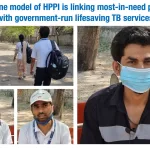Genetic testing is valuable for confirming a diagnosis of Stickler syndrome and identifying at-risk relatives. However, it does not inform the optimal timing for providing prophylactic retinal treatment that can reduce the risk of contralateral retinal detachment.
These findings were presented at the American Society of Retina Specialists (ASRS) 2024 Annual Meeting by researchers who conducted a study to search for correlations between specific mutations and the severity of the disease.
Understanding Stickler Syndrome
Stickler syndrome affects an estimated 1 in 8000 newborns. It is caused by mutations in several genes, particularly COL2A1 and COL11A1, which code for collagen components that give structure and strength to connective tissue in joints and various organs. Mutations in these genes lead to a variety of signs and symptoms, including high myopia, glaucoma, retinal detachment, hearing loss, and skeletal abnormalities.
Hereditary Retinal Detachments: A Significant Concern
“Hereditary retinal detachments are particularly challenging,” said Franco Recchia, MD, a vitreoretinal specialist at Tennessee Retina, reporting the study results at the conference. “They typically affect younger patients and are often bilateral.”
Recchia explained that preventive retinal treatments, like prophylactic retinopexy, could significantly reduce the risk of retinal detachment and vision loss in diagnosed patients. Also, identified at-risk relatives could benefit from early intervention to prevent vision-threatening complications.
The Study
Recchia and his team conducted genetic testing of 60 people with retinal detachment and suspected Stickler syndrome using a commercially available gene testing platform targeting the collagen genes. The age of onset for the first retinal detachment in these patients ranged from 3 to 46 years, with a median age of 10 years.
The testing revealed pathogenic variants in the COL2A1 or COL11A1 collagen genes in 93% (56 out of 60) of the patients.
Comparing the patients with the two variants, the researchers failed to find obvious differences in onset and laterality of retinal detachment or in the incidence of systemic disease.
Detailed Findings on COL2A1 Mutation
Looking more closely at the COL2A1 mutation, the researchers found that some variants caused an aberration or reduction of the type 2 collagen alpha-1 chain. “Patients with these particular variants tended to have the disease at an earlier stage and a more severe detachment,” Recchia said.
The researchers were also able to confirm that 50% of first-degree, at-risk relatives (13 of 24) who were tested had the disease, with clinically significant signs of glaucoma, hearing loss, or skeletal dysplasia, but none had retinal detachment.
Remaining Questions and Challenges
Several crucial questions remain unanswered. “We still don’t quite know exactly who to treat, when to treat, or even how,” Recchia said. It continues to be difficult to determine the optimal timing for intervention, establish if there’s an age threshold beyond which complications become less likely, or decide if certain children require more aggressive early treatment to prevent vision loss. “In this era of precision medicine, we should be able to answer these [questions].”
He added that “there is no one gene, one effect” in patients with Stickler syndrome. Some families have children affected at age 5, while their relatives have no symptoms at age 40, suggesting that other genes might be at work.
Expert Insight
Michael Gorin, MD, of UCLA Stein Eye & Doheny Institutes, highlighted the limitations of gene testing. He explained that genetic testing for Stickler syndrome-associated genes in patients with early-onset retinal detachment may yield variants of uncertain significance in one or more genes. These results can be difficult to interpret, as some variants may be pathogenic, while others are benign. “Nonsense or termination codon variants, including frameshifts, are more likely to be deleterious. Missense variants are trickier to interpret. In these cases, one needs to do additional investigative work with other informative family members to assess the clinical significance of these variants,” he said. He added that current testing methods may not detect all pathogenic variants, such as intronic or structural ones. “Thus, you can’t fully rely on molecular genetics but still need to have a good family history and may still need to rely on more detailed clinical assessments of the patient and even other family members.”
Future Directions
To overcome these limitations, Recchia said his team at Tennessee Retina is extending the analysis to family pedigrees and multigenerational testing to better correlate phenotypes with genetic variants. Their goal is to expand their registry and create a multicenter consortium to further understand the disease.
“The biggest take-home message for retina specialists is to be aware of the disease, ask patients about their family history, and make sure they don’t have signs of Stickler syndrome because the best thing you can do for these patients is to treat them preventively.”
Conclusion
While genetic testing plays a crucial role in diagnosing Stickler syndrome and identifying at-risk individuals, the optimal timing for preventive retinal treatment remains elusive. Continued research and multigenerational studies are essential to improve patient outcomes and refine treatment strategies in this era of precision medicine.











